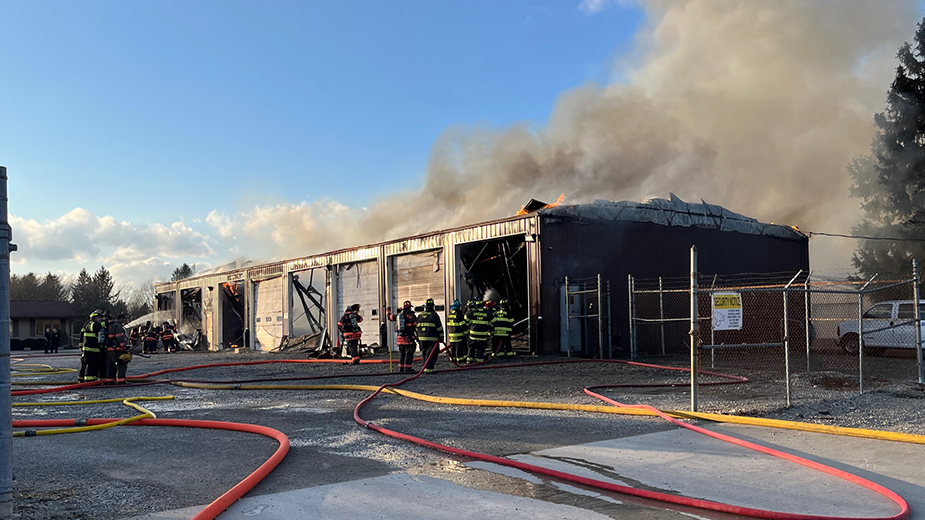LNG Exports Fuel Pipeline Projects in Ohio, Pa.
YOUNGSTOWN, Ohio — Despite the collapse of oil and gas prices that started at the tail end of 2014, industry executives are upbeat about the prospects of increased international demand for natural gas liquids found in the Utica and Marcellus shale plays.
That means more opportunities to export these liquids through pipelines and major ports that have been reconfigured to ship ethane, butane and propane to markets around the world.
“We’ve entered the next phase of the shale revolution,” says Joseph Coella, senior vice president of business development at Sunoco Logistics. “With the completion of new ethane crackers and export facilities, ethane supply and demand can become tighter”
Central to Sunoco Logistics’ plan was converting its Mariner 1 pipeline – initially used to transport petroleum from Philadelphia to Pittsburgh – to a natural gas liquids line that now moves gas from the Marcellus and Utica shale plays to Sunoco’s Marcus Hook Industrial Complex in Delaware County, Pennsylvania.
From there, the gas is processed, stored and sent to both domestic and export markets. The first ethane moved through the system in January and the first ships were loaded in February, Coella says.
A second line, the $3 billion Mariner East 2 project, is planned to be operational sometime in the second quarter of next year, he continues. The Mariner East 2 line will connect two fractionators in Scio and Hopedale in southeastern Ohio with a processing operation in Houston, Pennsylvania, in Washington County.
From there, the line will run parallel to Mariner East 1 to the Marcus Hook terminal and have the capacity to transport 275,000 barrels of NGLs per day.
Once that line is commissioned, the propane gas that currently flows through Mariner East 1 will be transferred to Mariner East 2. “ME1 will solely be an ethane pipeline,” he says.
The greatest advantage of these two projects, Coella says, is that it significantly reduces the cost of transporting NGLs to the East Coast instead of terminals such as Mont Belvieu, Texas.
“It’s very competitive in terms of export costs versus the Gulf,” he says. “They key to success is all about the logistics – how do I get it to market cheaper than the next guy?”
Even before Marcus Hook upgraded its complex with faster loading capabilities and lower freight rates, the terminal supplied half of northwestern Europe’s imported propane.
“Now, with faster loading and lower freight rates, we’ll be the most competitive outlet to European markets,” Coella says.
Mariner 2 is a welcome project for tradesmen affected by the Ohio portion of the pipeline because oil and gas infrastructure work across the state has dried up along with drilling activity, says Clint Powell, business agent for Laborers Local 809 based in Steubenville.
“Right now, everything has slowed down because of gas prices, so there are a lot of guys laid off,” Powell says. “Hopefully, we’ll be starting in July on the Mariner East line that runs from Scio to the East Coast.”
Local 809’s jurisdiction encompasses Columbiana, Jefferson and Harrison counties in Ohio, and Brook and Hancock counties in West Virginia.
Laborers from Powell’s local would work on a 54-mile segment that runs from UEO Buckeye’s fractionation plant in Scio through West Virginia to the Pennsylvania line.
However, Powell says, the market should improve next year as two new pipeline projects take shape that affect Ohio.
Energy Transfer Partner’s Rover pipeline is plotted to run 713 miles from West Virginia, angle northwest through Ohio and into Michigan. Construction should begin in early 2017.
Meanwhile, Kinder Morgan’s Utopia pipeline will stretch from Harrison County and link with the its existing pipeline system in Fulton County and transport natural gas liquids into Canada. Construction on that project should also start sometime in the first half of 2017.
“Next year looks like a promising year for a lot of our guys,” Powell says.
A third Mariner East project is also on the books, Coella notes, while Sunoco Logistics’ Mariner West pipeline, finished in 2013, transports ethane from processing and fractionation plants in the Utica and Marcellus to a Nova petrochemicals cracker plant in Sarnia, Ontario.
Demand for NGLs will continue to grow once major cracker projects in the Gulf Coast are finished, as well as Royal Dutch Shell’s $4 billion ethane cracker that it plans for Beaver County, Pennsylvania, the first such complex in the Appalachian region.
Crackers are large petrochemical complexes that “crack” ethane molecules into ethylene, a basic component of plastics that are used to manufacture thousands of different products.
Still, even with billions of dollars of pipeline projects in the wings, the Appalachian region lacks the infrastructure and storage capacity needed to transport its immense quantities of ethane and wet gas to national and international markets, repors Marc Halbritter, senior vice president of business development for Blue Racer Midstream LLC.
Mont Belvieu, for example, has the capacity to hold 200 million barrels of NGLs compared to between five million and 14 million barrels in the entire Northeast.
“There’s very little NGL storage in the Northeast relative to the Gulf Coast,” he says.
Blue Racer has four processing plants in service today, Halbritter reports. “Our plants today are running between 90% and 95% full, even in this down market.”
Blue Racer’s system connects with several interstate pipelines at Houston, Pennsylvania, including the ATEX line to the Gulf Coast, Mariner East, and Mariner West lines.
“That gives us outlets to all the different markets,” he says.
Copyright 2024 The Business Journal, Youngstown, Ohio.


